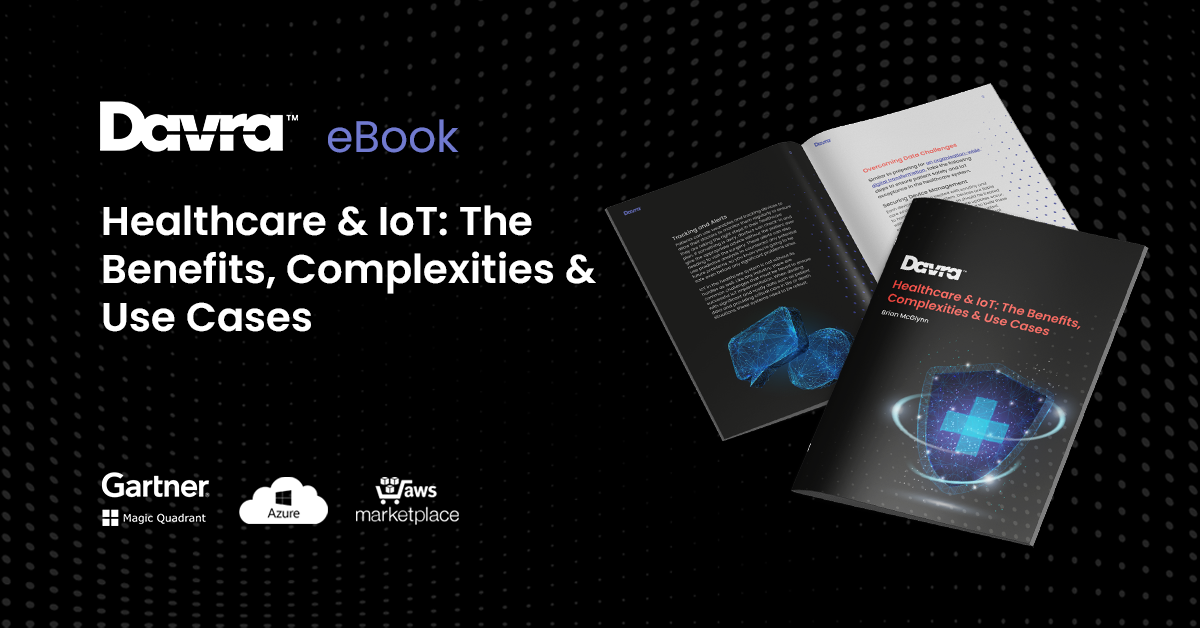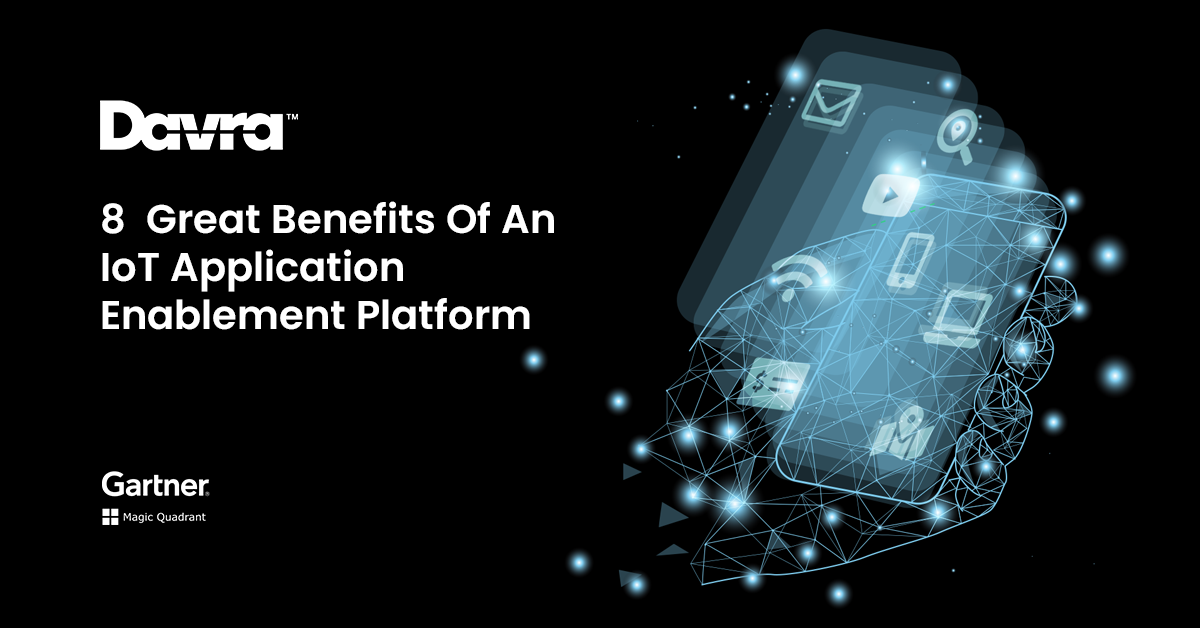IoT in Healthcare Use Cases eBook
Download Your Free IoT in Healthcare Use Cases eBook
Read More


The realm of enterprise IoT solutions is awash with options. The massive array of choices can actually be pretty imposing, and this is exemplified in the wide selection of application enablement platforms, or AEPs (If I am honest I see less than 10 relevant options). Still, the benefits must outweigh the initial hurdles, because more companies are throwing their weight behind these powerful tools.
Why would business leaders be so eager to venture into the unknown with IoT platforms? While only a fine line separates bravery and sheer recklessness, courageous decision-making may have little to do with the trend. Instead, the potential benefits of AEPs are widely known and continually proving themselves. Here are just eight of the top motivating factors for leveraging an IoT AEP.
Effective AEPs respond to their users’ needs. For instance, many leading solutions break traditional conceptual boundaries by being able to deploy seamlessly in the cloud as well as edge networks. At the same time, they remain flexible enough for users to modify their deployments whenever it seems advisable.
No matter how inspired they seemed in the planning stages, it’s almost guaranteed that IoT deployments will need to evolve rapidly during their real-world lifecycles. Companies that start with well-engineered AEPs retain the power to push back against unexpected delays and problems because they can quickly implement and test changes.
In the world of enterprise software, extensible platforms differentiate themselves from their peers by being open to new functionality. For instance, many startups and no few large conglomerates thrive on open-source software that they can modify and expand. In short, extensibility facilitates the straightforward creation of completely new enterprise systems.
The IoT isn’t all that different from other IT solutions in this regard. Since it’s running software, its ability to accomplish critical tasks depends on the libraries, modules, APIs and other programming resources at its disposal.
Fortunately, AEPs take their cues from the much-beloved cloud platforms that dominate today’s business world. Their ability to run a variety of custom software and support diverse sensor hardware makes it possible to tackle unique process problems that defy conventional solutions. This makes AEPs a presence to be reckoned with in fields as varied as manufacturing, smart city design and precision farming.
From onboarding new employees to teaching old dogs new professional tricks, continuing education is critical to business, government and public service alike. The typical unmanaged IoT migration, for instance, is a prime example of how messy things can get.
AEPs offer a bit of structure that’s far too lacking in most self-guided IoT solutions. Organizations that use AEPs get to partner with vendors that can help them integrate their new tools into existing processes. By making it simple to train uniformly and globally, the right providers facilitate smooth transitions and successful projects.
One of the most common misconceptions about IoT hardware is that all it does is sense things. Although this may be true of the mechanical, chemical, electrical and other integrated circuits that power them, IoT sensors are thinking machines that can perform elaborate logical tasks.
Such complexity is a basic necessity since IoT sensors need to be able to handle chores like parsing network communications. Many devices go even further by doing extra tasks, such as filtering noise from the information they generate or storing records and publishing them in batches for more orderly network traffic.
Traditional business systems were extremely limited in their ability to learn new skills, much like an old hammer. The AEP-powered IoT is more like a hammer that can magically transform itself into a screwdriver on demand. Since users can reprogram how things work on the fly, they can accomplish a broader variety of tasks and react to new challenges.
All good leaders know that process monitoring is integral to their success, and the IoT is nothing if not great at facilitating awareness. Clinical healthcare enterprises can use occupancy-tracking devices to quantify patient wait times and improve their services. Smart city leaders can use environment-monitoring IoT deployments to learn how different traffic routing patterns might impact air quality at certain times of the day. Manufacturers commonly integrate their control systems with hardware oversight devices that stop normal operations when they detect dangerous conditions.
AEPs can readily oversee business processes, such as building energy use or clinical caregiver activities, but they can also be configured to monitor their own operations. As software ecosystems, self-observation is already hardwired into their foundations: It’s simple to improve IoT deployments built on uniform AEPs that monitor basics like network performance and sensor connectivity.
When an organization creates something that works, it stands to reason to try to replicate the success. Unfortunately, this can be nigh-on impossible with some IoT implementations that lack AEP support.
AEPs are similar to many types of stateful software, meaning that they’re designed to remember and track things like user interactions, previous events and preferences. In addition to performing such tasks at the user-client or user-interface level, good AEPs make it easy to save entire system configurations and export them.
Imagine that an industrial freight company wants to open a new warehouse that runs just like all of its other facilities. With the IoT, it merely needs a copy of the building floor plan and the right hardware. From there, cloud-connected AEPs can easily handle the process of creating an identical clone of the old deployment. Since no humans need to take part in the minutiae, it’s far less likely that someone might forget critical components during the migration.
Contemporary enterprises have their fingers in many pots. Although the business processes and IoT sensors that dominate such domains necessarily differ, modern corporate life doesn’t have to be a confusing jumble of advanced tech. Thanks to AEPs, a manufacturer that already uses the IoT to monitor its order fulfillment processes can easily replicate the same data-aware, top-down decision-making practices with its manufacturing lines.
As organizations use the IoT, they inevitably discover new data sources of interest. AEPs make it easier to move ahead confidently and conquer these as-yet-unexplored operating areas.
Want to doom a business project to almost certain failure? Equip a company with new software, but give each department different instructions on how to use it. Even if the system supports different usage modes, dashboards or clients, it’s unlikely that the project will produce the desired results if nobody’s on the same page.
Poorly executed IoT implementations can become similarly muddled. By democratizing business IT, the IoT gives stakeholders more power to generate unique feedback, which may increase confusion. For instance, offices and teams commonly create their own IoT solutions to provide leadership with fresh perspectives.
AEPs endow enterprises with a clearer sense of direction by tying such insights together. Leading solutions that use a single platform for all gateways and sensors help stakeholders learn from their peers’ innovations. They also make it easy to track performance indicators against a common baseline.
Picking an AEP can seem tough with so many possibilities, but a few leaders stand out from the pack. Learn why the world’s most discerning users stick with proven solutions by checking out Davra online.
Brian McGlynn, Davra, COO
Download Your Free IoT in Healthcare Use Cases eBook

Davra IoT is the only Industrial IoT Platform Available on AWS Marketplace
Read MoreThe Collaboration of Humans & Robots Has Created The Cobot
Read More